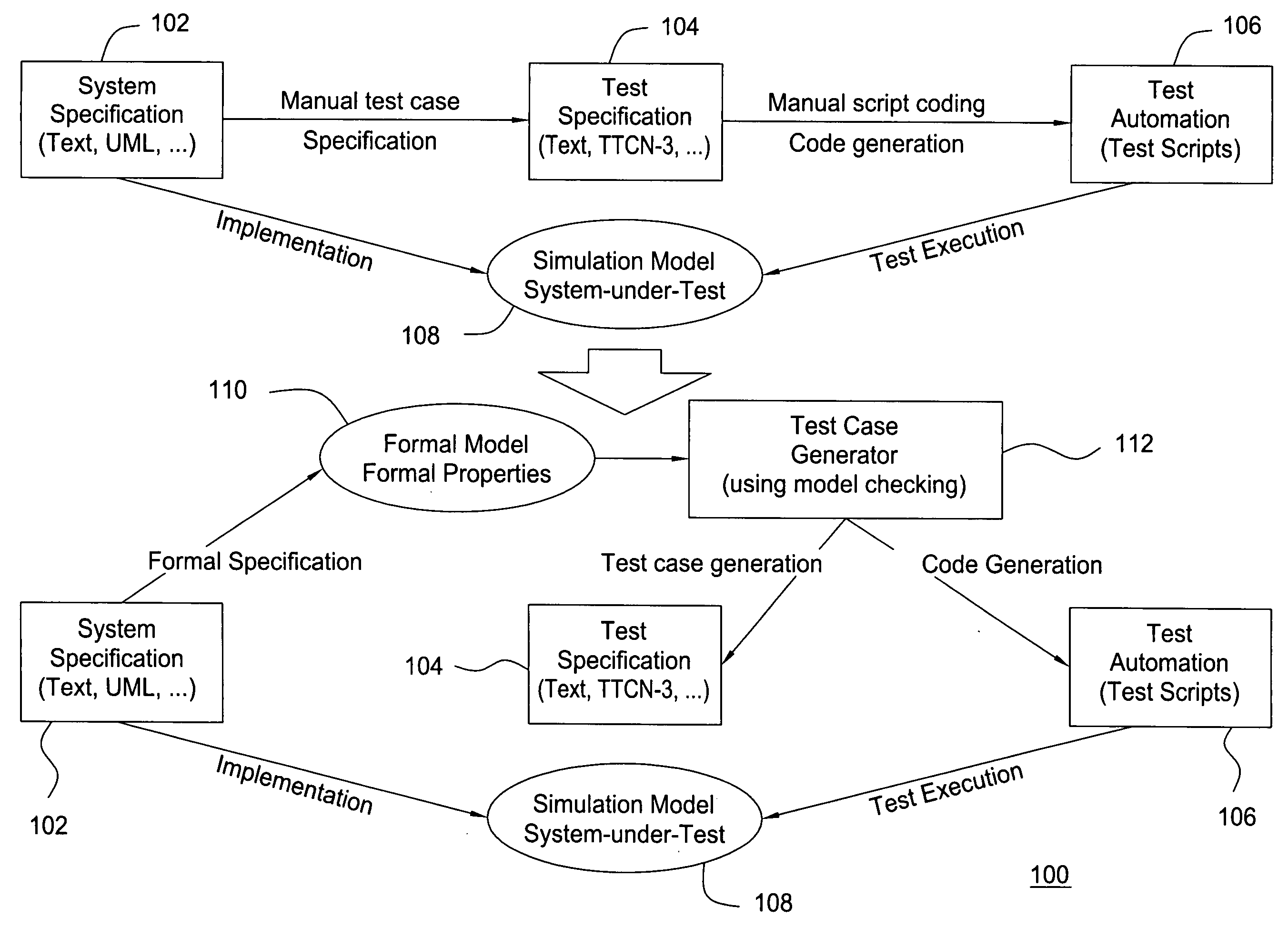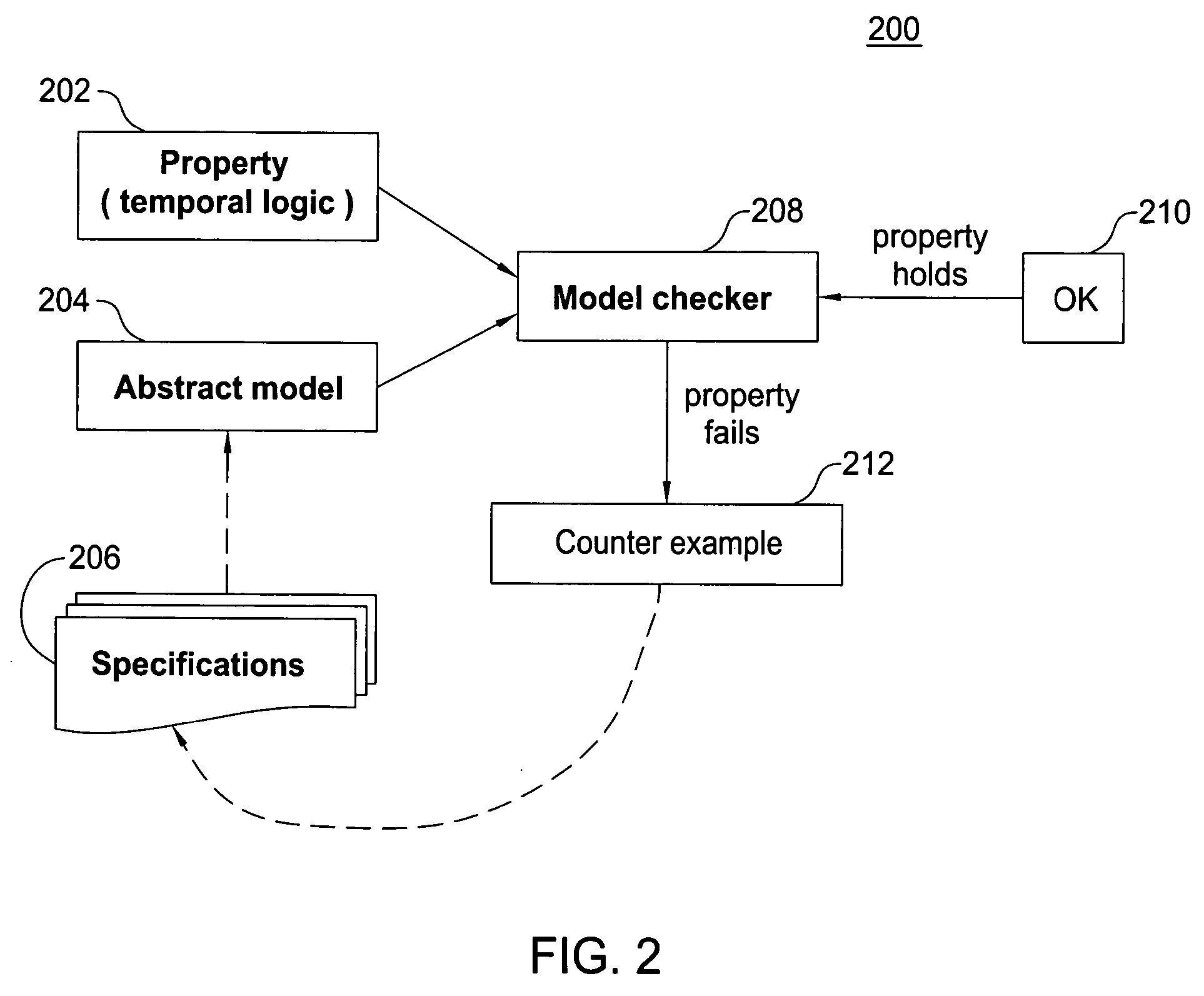Test case generation algorithm for a model checker
a test case and model technology, applied in the field of verification, validation and testing, can solve the problems of project effort and cost, past approaches to generating test cases have not been efficient, and add needless effort and cost to projects
- Summary
- Abstract
- Description
- Claims
- Application Information
AI Technical Summary
Benefits of technology
Problems solved by technology
Method used
Image
Examples
example
[0053]FIG. 6 illustrates a first property, P1, which is a very simple example of a property that starts from the initial state of the system. In the property, we want to check that the fill level of the stack changes to normal after a push operation in the initial state, where the stack is empty. The general_assertions macro (see FIG. 5) is not required for this particular property, but it does no harm to use it anyway. The negated property !P1 contains NOT(fill_level=normal) in the prove part. Considering only the input signals from the debug sequence (in this case, only the command signal) generated with the property !P1 results in FIG. 7.
[0054]FIG. 7 illustrates an exemplary mapping of input signals to test procedures for the first property of FIG. 6. These input signals are now mapped to test procedures. For command=none, there is no need to call any test procedures for command=push, merely to call one test procedure, push, with no arguments. This information is taken from the ...
PUM
 Login to View More
Login to View More Abstract
Description
Claims
Application Information
 Login to View More
Login to View More - R&D
- Intellectual Property
- Life Sciences
- Materials
- Tech Scout
- Unparalleled Data Quality
- Higher Quality Content
- 60% Fewer Hallucinations
Browse by: Latest US Patents, China's latest patents, Technical Efficacy Thesaurus, Application Domain, Technology Topic, Popular Technical Reports.
© 2025 PatSnap. All rights reserved.Legal|Privacy policy|Modern Slavery Act Transparency Statement|Sitemap|About US| Contact US: help@patsnap.com



